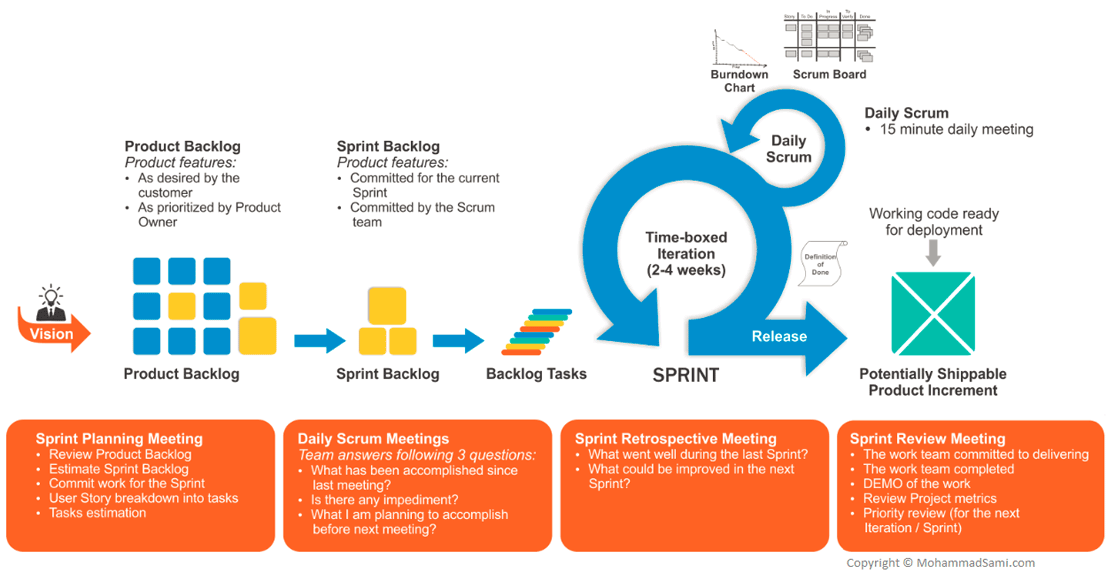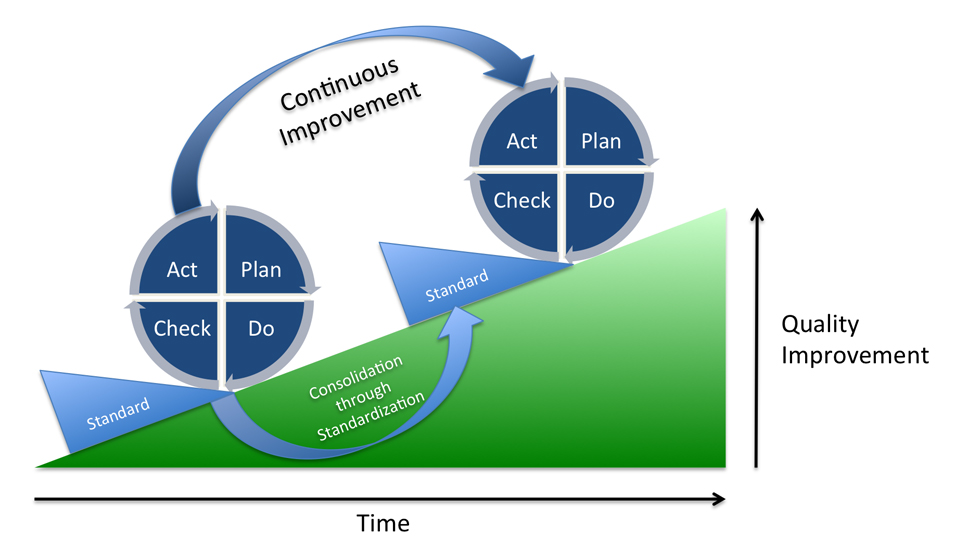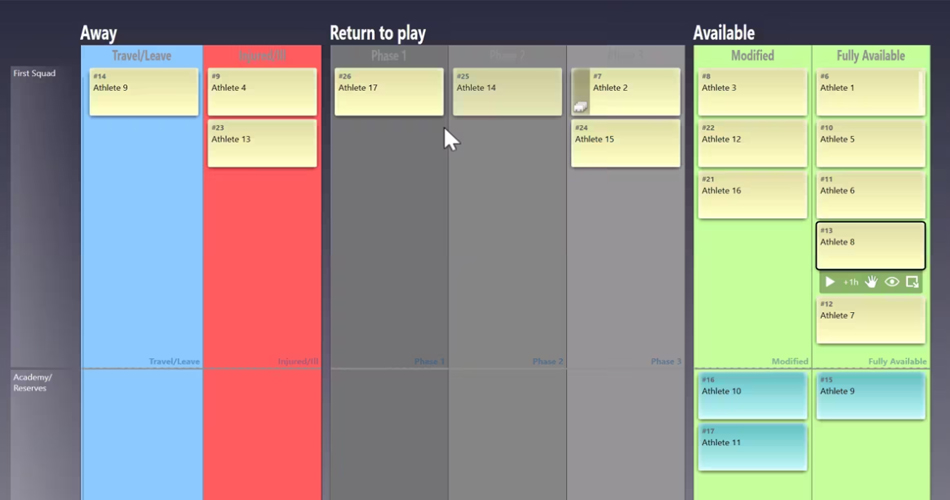Managing the High Performance Teams – Part 1
Introduction
A lot of (High Performance) teams are looking for the magic bullets in terms of GPS tracking, sleep monitoring, saliva analysis, brain wave monitoring and such, while spending millions of dollars on equipment and consultants. Most of them are forgetting to address the “big elephants” in the room: clear schedules, checklists, roles and responsibilities, meetings and a lot of other things that costs nearly nothing.
When you are a single coach in the private sector and you are dealing with few athletes, it is much easier to get organized. But when you are a part of the big machine such as High Performance team, where there might be multiple coaches, PTs, medical doctors, masseurs, sports scientists, nutritionists and so forth, getting organized is of utmost importance. Because in my experience a lot is lost in the noise and lack of clear communication channels.
Please bear in mind that I am by no means an expert in organizational sciences, but I have been part of few big teams and I have seen few “elephants in the room” that have not been addressed appropriately. I wholeheartedly agree with James Smith, author of the “The Governing Dynamics of Coaching- A Unified Field Theory of Sport Preparation” book, that each High Performance organization need to have a position that is responsible for organizing people, departments and the overall processes. This article is written with such a person in mind – someone who can implement few strategies discussed here in their High Performance Teams.
Overall Information and Main Principles
Most of my knowledge comes from seeing things succeed and fail in real life, as well as reading on Lean, Agile and Kanban (see resources at the end, especially Managing (High) Performance Teams Using Scrumban Boards) as well as reading on personal and team productivity. I believe one thing to be of the utmost importance: Transparency(of roles, tasks, precesses, schedule, obligations, consequences, and so forth). Once we have good transparency we can also have clarity, trust, dialogue, accountability, experimentations and any other touchy-feely word you might think of. But it all starts with transparency.
Since transparency is so important (according to me), I will discuss few strategies and tool one might use in High Performance teams to increase it, as well as other important factors.
I have found Agile practices from IT and Software Development to be really helpful in our complex domain for planning and managing the training process (and staff). I have called this implementations Agile Periodization. Although I have mainly written on Agile Periodization when it comes to planning of the training, in this article I will focus on management of the team using the same principles that come from the Agile and Lean worlds.
Scrum is one of the most popular frameworks for implementing Agile. What is special about Scrum is that this methodology approaches product development (and planning) in fixed length iterations called Sprints, which are usually 1-4 weeks in duration. Scrum is very well defined methodology that consists of Scrum Values, Scrum Roles, Scrum Events (which we will focus on) and Scrum Artifacts. I urge you to check some of the resources for in depth coverage of Scrum, but in short it revolves around the following:

Figure 1. Scrum Framework. Image by Mohammad Sami
- We define what needs to be done (this can be updated) – Product Backlog
- We define what needs to be done in the next planning iteration (Sprint) – Sprint Backlog, which is the result of Sprint Planning meeting
- We proceed to Sprint implementation, during which we perform Daily Stand Up meetings to make sure we are on the right course
- After Sprint end, we perform Sprint Review and Sprint Retrospective meetings (more on this later)
- Rinse and repeat
Of course there is more to this. And of course it looks very simplistic, but it is indeed very powerful because it gives us the right structure and routine when dealing with complex realities of managing High Performance Teams, as well as the right balance between standardized work and experimentation (see Lean resources on standardized work and PDCA cycle).
What sets everything for the path of success are the clearly defined meetings. This is important for the transparency to be achieved and silos to be removed. We are going to focus on those and how they can be implemented in sport settings.
Sprint Planning
This is a meeting (or meetings) at the beginning of the Sprint, usually for few hours. In Sprint Planning meeting, exact objectives of the Sprint (moving tasks from “Product Backlog” to “Sprint Backlog”), roles and obligations, clear expectations for the duration of the Sprint are defined as well as the final “product”. In Sprint Planning meeting duration of the Sprint is defined as well. Sprint duration in IT settings is usually held fixed at 1-4 weeks, but in sport environment this can vary due competition schedule (especially in team sports).
In my mind, Sprint is the amount of time necessary to develop a MVPe, or minimum viable performance that can be demonstrated or measured explicitly or implicitly using “embedded testing” (testing without testing). For example, in team sports this MVPe can be a friendly or a regular game, making Sprint duration last for around 7 days in-season. Not sure this can be written in stone, so I believe that Sprint can span more than one league games. The point is that Sprint is an iterative cycle with clearly defined tasks, time frames and events (meetings).
Another concept worth mentioning is MVPr or minimum viable program. MVPr is a minimally complex and doable program (i.e. standardized work from Lean) that is our starting point, that we adjust and adapt to suit the individuals through Sprint iterations. This concept was quite helpful to me, since I am perfectionist and always try to start with the perfect program. This usually results in paralysis by analysis and time wasted. Now, rather than trying to figure out the “perfect” program, I start with MVPr that is doable in current conditions (i.e. facilities, equipment, man power, etc). For example, when we are new with the team or just starting new season with few new players, we might start with a MVPr and through short iterations use fast feedback to make it more custom-tailored to the athletes and context at hand, and thus converge to “optimal” solution (although conditions might change and hence we might never reach that point, besides things might be so complex that we might not even know what the problems are, and hence it is hard to define objectives, which makes act-measure-plan better strategy than measure-plan-act). This way iterative planning allows us organizational adaptability and agility through well defined structures and meetings and it’s iterative nature with fast feedback. This means that the precise programs should be short-medium term, rather than long term since we are unable to predict the responses and changes and we are just wasting time planning (or maybe even worse by trying to stick to the plan by all means).

Figure 2. Conceptual relationship between standardized work and Plan-Do-Check-Act cycle
I believe that Sprint Planning, Sprint Review and Sprint Retrospective might even become merged into one meeting, so these are separated here for the sake of discussion, although it might be feasible to separate them due time and “attention” limitations.
Long story short, and in less fancy terms, Sprint Planning is a process of coming up with the precise training program for the next 1-4 weeks using the new knowledge from the last Sprint Review. This by no means mean we are jumping band wagons after every game, rather, we are updating out long term model/plan (can be called “Release Plan”) with the new information.
The content of these meetings can range from planning the training programs, talking about tactics or system of play to athletes review and medical and rehab assessments and talk with doctors and PTs. Sprint Planning meeting more on what needs to be done next (in the next Sprint) taking into account what has been learned previously and what has been identified as limiting factor, constraint or an objective.
Having defined structure and routine with meeting helps everyone in the High Performance staff to continuously re-align, share, discuss and hence provide for much better clarity and transparency.
One thing worth mentioning about meeting and implementation of simple rules (or heuristics) is that before someone talks twice in the row, everyone in the room needs to speak up. This would allow everyone to share.
It must be emphasized that I am talking about staff meetings here, although similar form of meetings should be planned with athletes themselves. Hence, in my opinion all of these meetings should have two versions: staff and athletes.
Daily Stand Up
Daily Stand Up is a quickly everyday before-work meeting for around 5-15 min. The name comes from the fact that meeting should be short enough so everyone can stand up. This is just a quick ‘sync’ meeting, designed to keep all group members on track in a cohesive manner.
According to Scrum guidelines, each member of the teams should answer the following questions:











Responses